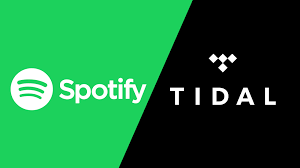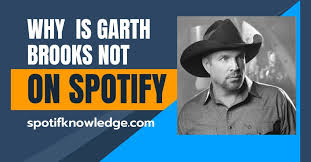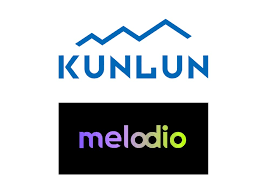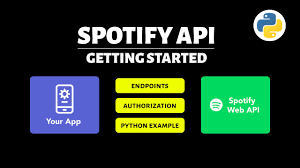Introduction: Why Compare Tidal and Spotify Now?
If you’ve ever found yourself wondering is Tidal better than Spotify, you’re not alone. As music streaming becomes an essential part of daily life, listeners want more than just a big library—they want sound quality, artist support, personalized discovery, and overall value.
In 2025, both Tidal and Spotify have matured significantly. Spotify is still the undisputed leader in global market share, but Tidal has quietly carved out a niche among audiophiles and artist-first supporters. So the question is no longer just “which has more songs?” but rather, “which suits your music experience better?”
In this blog, we’ll break down everything from audio quality to pricing, exclusive features, offline listening, ethical considerations, and more—to help you decide if Tidal is truly better than Spotify for your needs.

1. Audio Quality: Tidal Takes the Crown
Tidal’s main selling point is its lossless, high-fidelity audio. Tidal HiFi and HiFi Plus tiers support FLAC, ALAC, MQA, and Dolby Atmos, offering studio-quality sound—especially noticeable with high-end headphones or speakers.
By contrast, Spotify still doesn’t offer lossless audio in 2025. Spotify HiFi was announced back in 2021, but after several delays, it only started limited rollout in late 2024 with no official global release.
| Service | Max Audio Quality | Format | Bitrate |
|---|---|---|---|
| Tidal HiFi Plus | Master Quality (MQA), Dolby Atmos, FLAC | ~2,304 kbps | Lossless |
| Spotify Premium | AAC (320 kbps) | ~320 kbps | Compressed |
2. Music Catalog & Exclusives: Spotify Still Leads in Quantity
Spotify boasts over 100 million tracks, a massive range of indie artists, podcasts, and user-created playlists. It’s incredibly easy to find obscure tracks or global genres thanks to their powerful algorithm.
Tidal, on the other hand, offers around 90 million tracks, and while the difference may not matter for mainstream listeners, some niche content (especially independent podcasting) is still missing. However, Tidal has exclusive releases—especially in the hip-hop, R&B, and soul scenes.
Example: Artists like Beyoncé, Jay-Z, and Prince have historically released exclusive content on Tidal before Spotify.
Verdict: Spotify wins in overall catalog depth and variety, but Tidal may be better for fans of exclusive and artist-first releases.
3. User Interface & Algorithmic Recommendations
Spotify's Algorithm Is Still Industry-Leading
Spotify’s personalized playlists like Discover Weekly, Release Radar, and Daily Mix are iconic for a reason. The algorithm adapts to your mood, time of day, and even your location. It's an AI-powered music discovery engine.
Tidal Focuses on Human Curation
Tidal does offer editorial content, curated playlists, and artist interviews, but its algorithm isn’t as intelligent or adaptive as Spotify’s. That said, some users prefer human-curated content over machine learning-based suggestions.
Verdict: If music discovery is key to your listening habits, Spotify is better than Tidal in this department.
4. Artist Compensation: Tidal Is More Ethical
One of the most significant differences in 2025 is how each platform pays artists.
Tidal HiFi Plus includes fan-centered royalties, meaning your subscription supports the artists you listen to the most.
Spotify uses a pro-rata model, where all subscription fees are pooled and paid out based on global stream counts—regardless of what you personally listen to.
Stat Snapshot (2025 Data):
| Platform | Average Pay Per Stream |
|---|---|
| Tidal HiFi Plus | $0.013 |
| Spotify Premium | $0.003 - $0.005 |
Verdict: If you want your money to support artists more fairly, Tidal is clearly better than Spotify.
5. Pricing Breakdown: Spotify Is More Budget-Friendly
| Plan | Tidal HiFi | Tidal HiFi Plus | Spotify Individual |
|---|---|---|---|
| Monthly Price (USD) | $10.99 | $19.99 | $10.99 |
| Audio Quality | Lossless | Master Quality + Dolby Atmos | AAC (320 kbps) |
| Artist Payout | Standard | Fan-Centered Royalties | Pro-rata model |
Verdict: If budget is your top concern, Spotify is more accessible. But Tidal HiFi (standard tier) is a great value if you care about audio quality without going all the way to HiFi Plus.
6. Device Support & Offline Listening
Both platforms support:
iOS / Android apps
Windows / Mac desktops
Smart TVs and car integration
Offline listening
However, Spotify has better compatibility with third-party devices, including gaming consoles, smartwatches, and smart speakers like Amazon Echo and Google Home. Tidal integration is more limited outside mobile and desktop apps.
Verdict: Spotify is more versatile across devices.
7. Extras: Podcasts, Video, and Live Experiences
Spotify:
Extensive podcast library including exclusives like The Joe Rogan Experience
Audiobooks (newly launched in 2024)
AI DJ (launched 2023) that talks between songs using your listening history
Tidal:
Behind-the-scenes content, short films, interviews
Live concerts (virtual events)
Editorial features focused on artist storytelling
Verdict: If you're into podcasts and audiobooks, Spotify is better. For music purists who want artist stories and videos, Tidal offers a richer music-first experience.
Conclusion: Is Tidal Better Than Spotify?
It depends on what kind of listener you are.
Choose Tidal if:
You value audio quality, fair artist compensation, and a music-first experience without distractions like podcasts. It’s ideal for audiophiles and supporters of independent or high-profile artists.Choose Spotify if:
You want better music discovery, budget-friendly access, and a robust ecosystem with podcasts, audiobooks, and seamless integration with your devices.
Both are powerful platforms, but they cater to different listening priorities. For some, Tidal is better than Spotify, especially when it comes to sound and ethics. For others, Spotify remains king because of its discovery features and sheer convenience.







